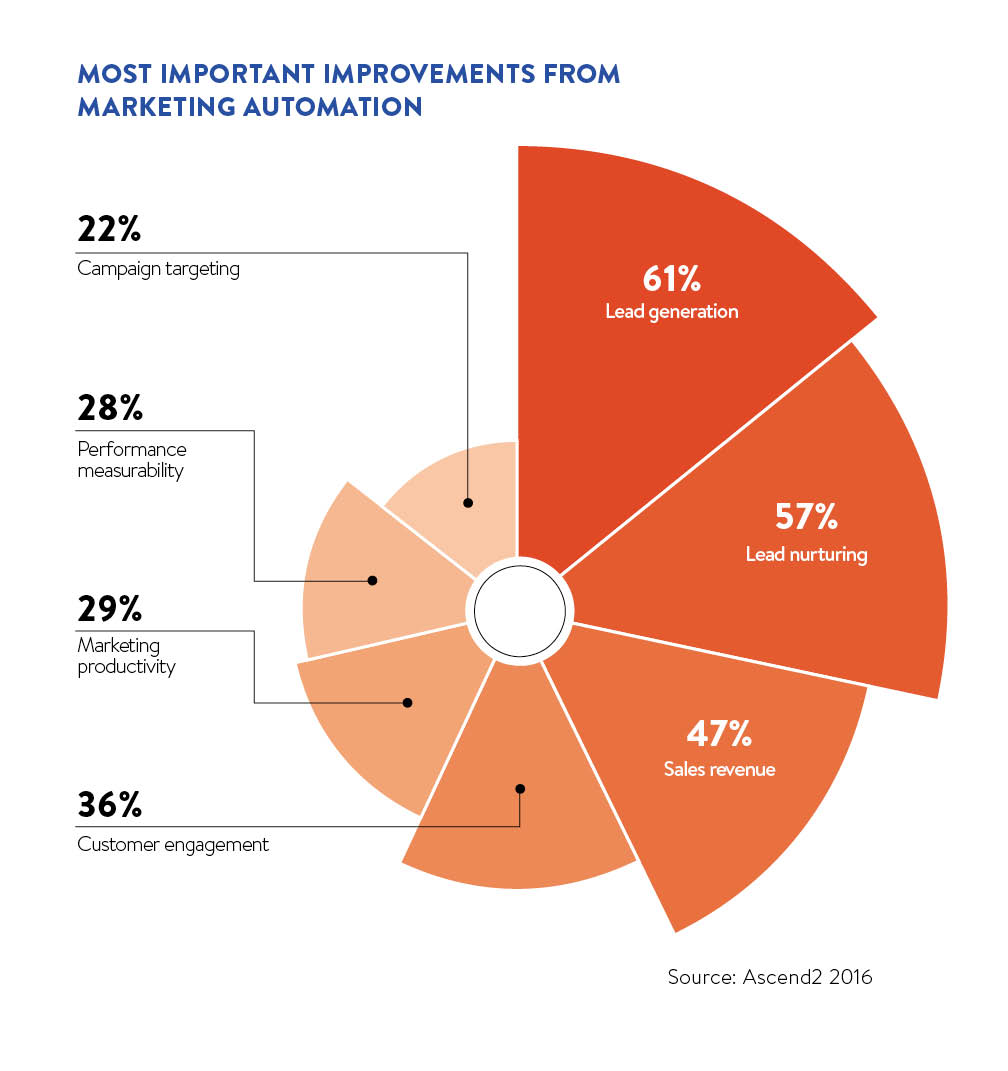The digital world we live in has profoundly changed customer expectations, something that’s often referred to as the “Amazon effect”. Customers demand greater personalisation, greater speed and greater relevance. Anything less and you’ve lost their attention, and potentially their custom.
Unsurprisingly, businesses have turned to the source of this disruption – technology – for the solution, and in quite significant numbers. In 2012, Gartner famously predicted that by 2017, chief marketing officers (CMOs) would be spending more on IT than chief information officers would. And that prediction appears to be on track, judging by the growth in the supplier market: ChiefMarTech’s annual estimation of the number of marketing technology vendors has increased tenfold from some 350 in 2012 to around 3,500 in 2016.
Sophisticated cross-channel technologies
One technology gaining particular traction is marketing automation. Often confused with outbound e-mail marketing systems, marketing automation tools are far more sophisticated, cross-channel technologies that integrate with customer relationship management, social media, web analytics and other systems. In the face of vast troves of data, demands for greater pace and personalisation, and the need to cut through the growing amount of noise bombarding your customers, they’re often heralded as something of a panacea.
Many businesses will look at technology as the solution in itself, whereas in reality, marketing automation tools are only part of a solution
Firstly, they promise compelling efficiency savings. Eliminating manual tasks, speeding up processes and automating a range of campaign management activities can free up time and resources of your teams or agencies that can be put to better use on higher value-adding activities. McKinsey & Company estimates that marketing executives and managers currently spend between 10 and 15 per cent of their time on manual tasks which can already be done by machines. And that’s before the nascent developments in artificial intelligence and machine learning are taken into account.
Secondly, they promise greater effectiveness. By drawing on a range of data sources, marketing automation tools help to build rich pictures of your customers and segments, based on their behaviour and response to your engagement efforts. They help you to identify how people respond to different messaging, different content formats, different communications channels and much more.

Only part of the solution
The challenge is many businesses will look at technology as the solution in itself, whereas in reality, marketing automation tools are only part of a solution. Implementing a new system alone may generate efficiency savings, but the allure of improved effectiveness will only follow if you pay attention to, and act on, the way in which customers engage with your communications and content, and establish agile, responsive ways of working to enable you to adapt your plans and pivot where needed.
UK professional services firm Deloitte recently implemented a new marketing automation system, as Bernard O’Brien, head of agency, explains: “Many senior people are bombarded with multiple messages from multiple sources, and we recognised that we needed to become both more streamlined and more sophisticated in how we go about engaging with clients. We wanted to build deeper dialogue and relationships with our clients and prospects on their terms, and on the issues that matter most to them, and frankly, avoid bugging them on the issues that don’t.
Profiling interests
“Take FTSE 250 chief financial officers, who are a key audience for Deloitte, as an example. We may learn there is a cohort of 30 to 40 people in this audience who are particularly interested in cyber security, whereas others less so. Marketing automation helps us to profile who these people might be and to continue a dialogue with them on this issue, while not doing so with others for whom it’s less pressing.
“Or we might figure out that certain types of people are interested in long-form content, such as a 20-page thought leadership report, whereas others will only come to breakfast briefings. Others may prefer some form of video content on the train on the way home from work. This technology allows us to change both the method of delivery, as well as the messaging, and that’s central to building deeper engagement, on their terms.”
Realising this sort of benefit means changing more than just the systems you use. It requires you to look in detail and over a longer time-horizon at the journeys different segments or customer profiles have with your business, rather than simply making ad hoc content efforts more efficient and streamlined.
It means you’ll need to approach content creation differently, to respond to learning about different consumption behaviour. For instance, if you typically publish an annual, in-depth thought leadership report that has historically been delivered in long form, you may need to deliver it in several different formats based on how different groups of your audience prefer to consume it.
In addition it means you’ll need to learn to listen to the data and the signals your marketing automation platform delivers, to help you to spot emerging trends and themes that are gaining traction with your target audiences, but are not necessarily adequately catered for in your plans.
And lastly, it means investing in training your people on new ways of working. Not just on the functionality of a new system, but on how to use the data and insight it delivers to identify new opportunities, and how to undertake campaign and communications planning in a more scientific, more agile way.
Ultimately, if the focus is technology implementation alone, you’ll most likely find yourself with a shiny new system in place that’s full of untapped potential. The greatest value of marketing automation is its ability to help you learn, but you have to be willing to listen.
Sophisticated cross-channel technologies

